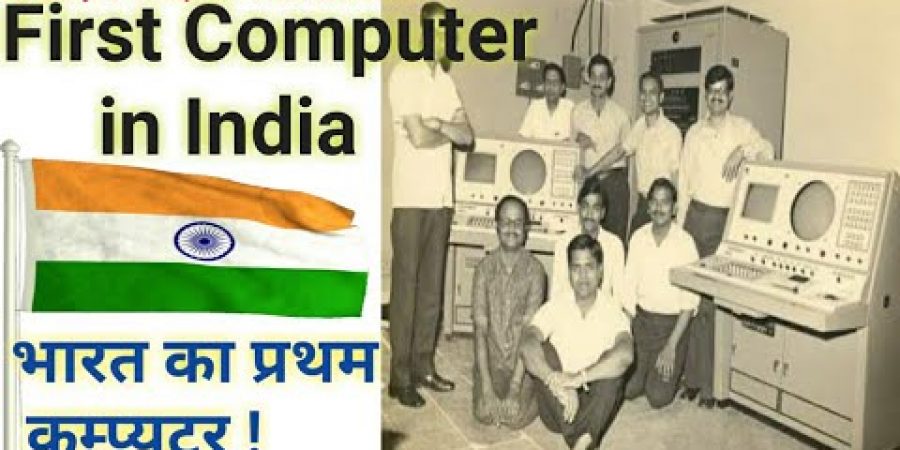The introduction of computers in India marked a significant milestone in the country’s technological and economic development. The journey of computers in India began in the early 1950s, and since then, it has evolved into a robust and dynamic IT industry. This article delves into the history of the first computer in India, exploring its significance, the technological advancements it brought, and its lasting impact.
The First Analogue Computer (1953)
Driven by the urgency for efficient data analysis, P.C. Mahalanobis spearheaded the innovation of the first analogue computer in India in 1953. This machine was designed to perform complex calculations needed for statistical analysis, representing a significant leap in computational capability at the time. The analogue computer facilitated quicker and more precise computations, aiding in the extensive data processing requirements of the NSS and other statistical projects.
India’s First Digital Computer: HEC-2M (1956)
The installation of India’s first digital computer, HEC-2M, at the Indian Statistical Institute (ISI) in 1956 marked a historic milestone in the country’s technological evolution. This achievement was made possible due to Mahalanobis’s relentless efforts and foresight. The HEC-2M, a computer from the British company HEC, was a state-of-the-art machine capable of performing a wide range of computational tasks.
- Significance: The HEC-2M’s installation underscored India’s entry into the digital computing era. It enabled more sophisticated statistical analyses and complex calculations, vastly improving the efficiency and scope of research conducted at ISI.
- Impact on Research: The availability of a digital computer at ISI spurred advancements in various fields of study, including statistics, economics, and operations research. It also facilitated the training of Indian scientists and engineers in the emerging field of computer science.
TIFRAC (Tata Institute of Fundamental Research Automatic Calculator)
The first computer in India was the TIFRAC, which stands for Tata Institute of Fundamental Research Automatic Calculator. It was commissioned at the Tata Institute of Fundamental Research (TIFR) in Mumbai (then Bombay) in 1955, and it became operational in 1960. This indigenous effort was led by the renowned Indian physicist Dr. Homi Jehangir Bhabha, the founder of TIFR, and was a significant achievement in the Indian scientific community.
Development and Specifications:
- Initiation: The project to build TIFRAC began in 1955 under the guidance of Dr. Bhabha. The initiative aimed to develop a computer that could aid in scientific research and solve complex calculations.
- Collaboration: Indian scientists collaborated with international experts and leveraged existing research to develop the machine. The efforts were led by Dr. R. Narasimhan, a prominent computer scientist.
- Technology: TIFRAC was based on vacuum tube technology, which was prevalent in computers of that era. It had a memory capacity of 2,048 words, with each word being 12 bits long. The computer used magnetic drum storage, a common memory device before the advent of more advanced technologies.
- Functionality: TIFRAC could perform arithmetic operations, logical operations, and basic input-output functions. It was capable of solving scientific and engineering problems, and its capabilities were on par with other contemporary computers globally.
Significance:
- Scientific Research: TIFRAC played a crucial role in scientific research and complex calculations, significantly aiding various research projects at TIFR and other institutions.
- Skill Development: The development and operation of TIFRAC helped cultivate a skilled workforce in computer science and engineering, laying the foundation for future advancements in the field.
- Technological Milestone: The successful development and implementation of TIFRAC marked India’s entry into the realm of digital computing, showcasing the country’s potential in technological innovation.
Subsequent Developments and Expansion
IBM 1401:
After TIFRAC, the next significant development in India’s computing history was the installation of the IBM 1401 in 1962. IBM (International Business Machines Corporation) played a crucial role in the early stages of computerization in India.
- Adoption by Businesses: The IBM 1401 was widely adopted by Indian businesses and government departments for data processing tasks. It became the workhorse for many organizations, handling accounting, payroll, inventory management, and more.
- Training and Education: IBM established training programs and courses to educate Indian professionals in computer programming and operations, contributing to the growth of a skilled IT workforce.
ICL 1900 Series:
In the 1960s and 1970s, India also saw the introduction of the ICL 1900 series computers from International Computers Limited (ICL). These computers were used extensively in academic and research institutions.
- Academic Impact: The ICL 1900 series facilitated research and education in computer science, helping universities establish computer science departments and curricula.
- Research Contributions: These computers supported various scientific and engineering research projects, furthering India’s technological capabilities.
Indigenous Efforts and the Growth of Indian IT Industry
ECIL and Indigenous Computers:
In the 1970s, the Electronics Corporation of India Limited (ECIL) was established to promote indigenous computer manufacturing. ECIL developed several computers, such as the TDC-12 and TDC-316, contributing to the growth of India’s computing capabilities.
- TDC-12 and TDC-316: These computers were used in industrial automation, process control, and defense applications. Their development marked a significant step towards self-reliance in computer technology.
- Promotion of Local Talent: ECIL’s initiatives fostered local talent and innovation, paving the way for future advancements in the Indian IT industry.
Software Revolution and IT Boom:
The 1980s and 1990s witnessed a software revolution in India, with the establishment of numerous software companies and IT service providers. Companies like Tata Consultancy Services (TCS), Infosys, and Wipro emerged as global IT leaders.
- Y2K and Outsourcing: The Y2K (Year 2000) crisis and the rise of outsourcing further propelled the growth of the Indian IT industry. Indian companies provided software solutions and services to clients worldwide, establishing India as a major IT hub.
- Government Initiatives: The Indian government introduced policies and initiatives to promote IT and computer education, leading to widespread computer literacy and the proliferation of IT businesses.
Impact and Legacy
The introduction of the first computer in India and subsequent developments have had a profound impact on the country’s technological landscape. Some of the key impacts and legacies include:
- Technological Advancements: The early adoption of computers laid the foundation for technological advancements in various fields, including science, engineering, healthcare, and education.
- Skilled Workforce: The development and use of computers led to the creation of a highly skilled workforce in computer science and information technology, contributing to India’s global IT leadership.
- Economic Growth: The IT industry has become a significant contributor to India’s economy, generating employment, foreign exchange earnings, and driving innovation.
- Global Recognition: India’s achievements in computer technology and IT services have earned global recognition, establishing the country as a key player in the global technology landscape.
The history of the first computer in India is a story of vision, innovation, and perseverance. From the development of TIFRAC to the rise of the IT industry, India’s journey in the field of computing has been remarkable. The early efforts laid the groundwork for the country’s technological prowess and economic growth, and the legacy of these achievements continues to inspire future generations of innovators and entrepreneurs.
Supplier or Manufacturer from India? Register FREE and List Your products





Leave feedback about this